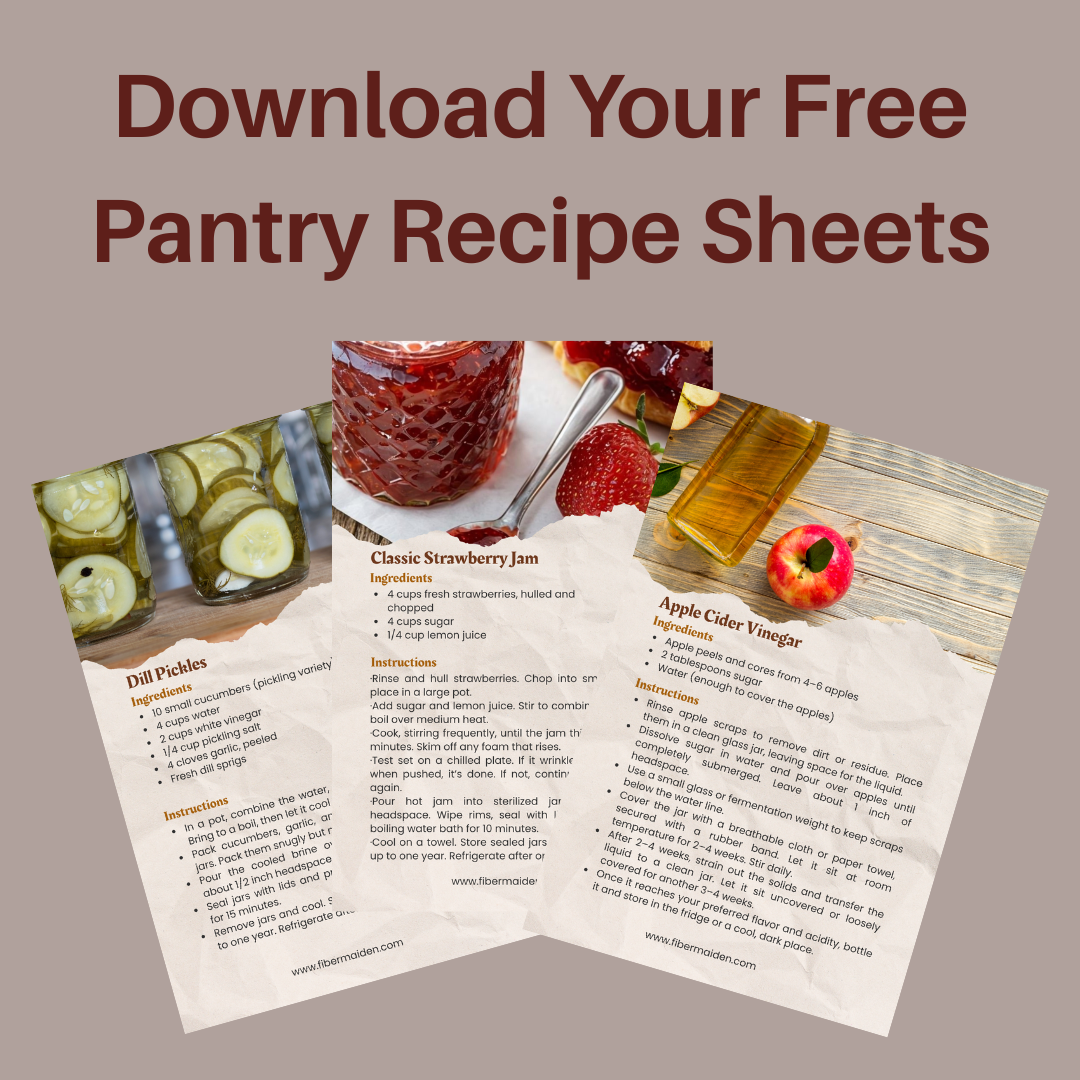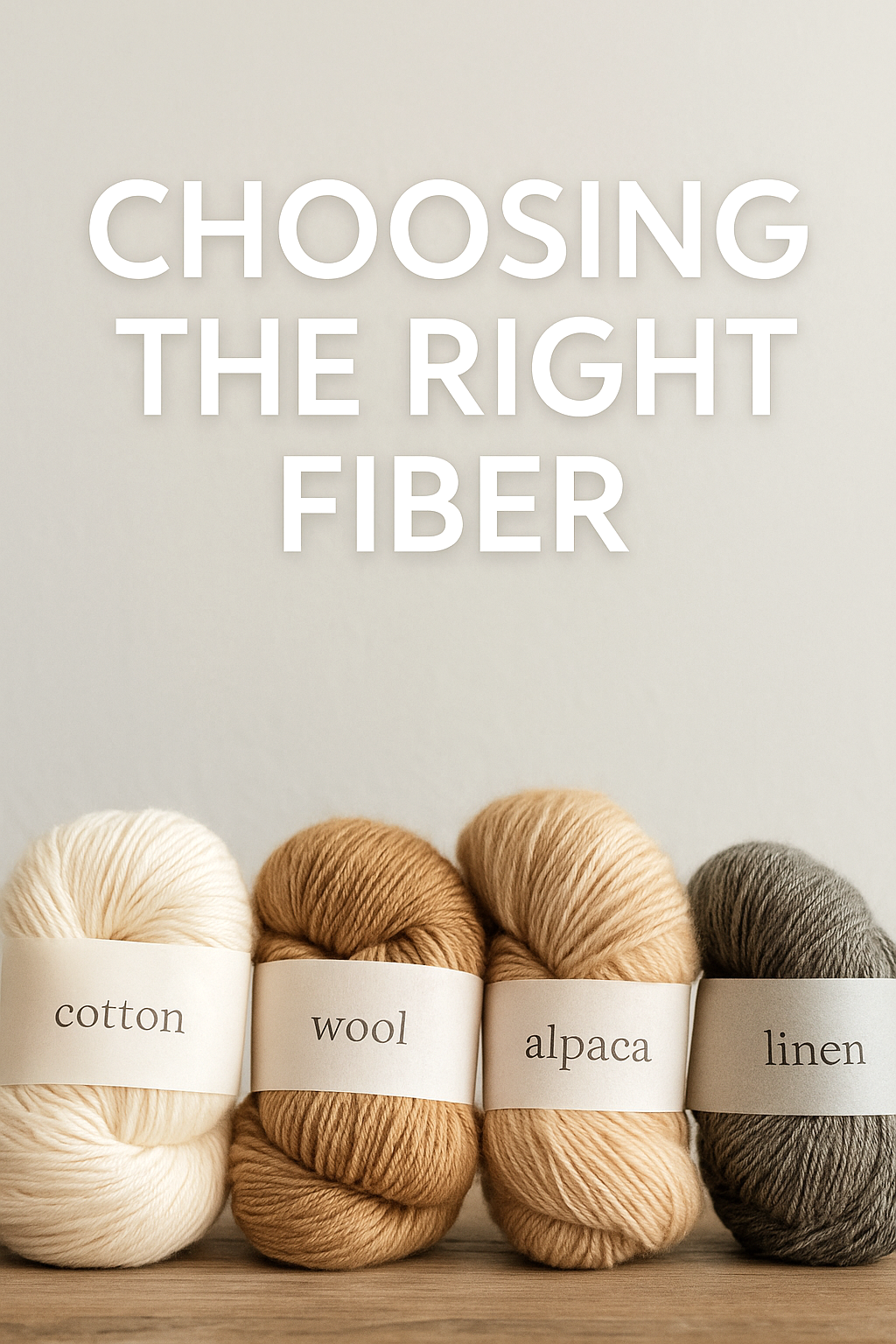Choosing the Right Fiber for Your Handmade Projects
Choosing the Right Fiber for Your Handmade Projects
The first sweater I ever knitted was a disaster of epic proportions. I chose cotton yarn because it was pretty and soft in the store, then spent months creating what turned out to be a shapeless, stretched-out mess that looked more like a potato sack than knitwear. That's when I learned that not all fibers behave the same, and knowing what to expect can absolutely make or break your project.
From stretch to drape to texture, each natural fiber has its own personality. Whether you're knitting a cozy winter cowl or sewing a breezy summer tunic, choosing the right fiber means the difference between something you'll treasure and something that ends up as expensive cleaning rags.
Get The Guide
Ready to stop feeling lost every time you pick up needles or thread? This guide covers the core techniques, tools, and terms for knitting, crocheting, weaving, and simple sewing. No more guessing, just clear steps and beginner checklists so you can actually start (and finish) projects you love.
Disclosure
Some links on FiberMaiden are affiliate links. When you click and purchase, I may earn a small commission at no extra cost to you. I partner only with brands and tools I trust and use in my own kitchen, studio, and garden. Your support means a lot.
Why This Actually Matters More Than You Think
Using the wrong fiber doesn't just affect how your project looks - it affects how it feels to make and whether you'll actually want to use the finished product. I've seen beautiful patterns ruined by cotton that won't hold its shape, and summer tops made from wool that nobody can wear without overheating.
Once you understand the basic personalities of different natural fibers, you'll stop making expensive mistakes and start creating things people actually want to wear and use.
Meet Your Fiber Friends
Wool - The Reliable Workhorse Warm, forgiving, and bounces back from mistakes. Wool holds warmth even when wet and has natural stretch that makes it perfect for garments that need to keep their shape. Think of it as the golden retriever of fibers - friendly, dependable, and great with beginners.
Cotton - The Structured Perfectionist Breathable and strong, but completely unforgiving. Cotton has no memory, so what you create is what you get forever. It's perfect for dishcloths and summer tops, but will stretch out in sweaters faster than you can say "expensive mistake."
Linen - The Elegant Rebel Starts out stiff and stubborn, then softens into something gorgeous with age and use. Linen creates heirloom-quality pieces that get better over time, but it definitely has opinions about how it wants to behave.
Alpaca - The Luxury Drama Queen Incredibly soft and insulating, but can be heavy and dramatic. Alpaca drapes beautifully for scarves and shawls, but might overwhelm lighter projects. It's the cashmere cousin that's slightly more approachable.
Bamboo & Hemp - The Eco Warriors Smooth, sustainable, and surprisingly silky. These fibers feel amazing against skin but can be a bit unpredictable with stretch. Perfect when you want something environmentally friendly that still feels luxurious.
Natural Fiber Care Guide
Keep your handmade projects beautiful
Never wring or twist • Lay flat to dry
Felting risk: Hot water + agitation = disaster
Pre-shrink fabric before sewing
Note: May fade in hot water, iron while damp
Gets softer with each wash • Iron while damp
Tip: Wrinkles are part of linen's charm
Roll in towel to remove water • Lay flat
Warning: Can stretch when wet, reshape carefully
Never twist or wring • Dry away from direct sun
Note: Water spots easily, test first
Tumble dry low or line dry
Tip: Gets softer with washing
The Quick Decision Guide
Before you buy any fiber, ask yourself:
Will this get heavy use? Choose wool or cotton
Does it need to keep its shape? Wool wins every time
Hot weather item? Cotton, linen, or bamboo
Want maximum softness? Alpaca or bamboo blends
The Bottom Line
Your fiber choice determines whether your handmade project becomes a cherished item or an expensive lesson. Take five minutes to match your fiber to your project's needs, and you'll save yourself hours of frustration and probably some money too.
The right fiber doesn't just make your project successful - it makes the entire process more enjoyable from start to finish.
Get 3 Free Recipe Sheets
Ready for recipes that don't require a culinary degree to follow? Get seasonal recipe sheets designed for real kitchens and busy lives, the kind that work even when your kids are asking for snacks mid-prep.









